With many major sporting events being postponed or canceled due to the pandemic, many are itching to watch or play sports again. As the country slowly but surely reopens, many shooting ranges are now opening their doors for a limited amount of people to come participate in their activities! Trap and skeet are sports that require their competitors to stand more than six feet apart from each other, so they work well with social distancing guidelines.
Shooting at clay targets and watching them shatter on impact has long been a popular pastime. Skeet and trap are two major disciplines in shooting, and they have been surging in popularity both as a hobby and a competitive sport. Clubs and resorts have been adding shooting to their list of available activities, along with things like golf, tennis, and swimming, because it’s a cost-effective activity to add to the roster.
Surprisingly, trap and skeet shooting are also increasingly popular in high schools, providing an opportunity for competitors of all athletic backgrounds to come together in a single sport. This sport doesn’t favor the biggest and strongest, but the person with the highest level of concentration and accuracy.
The Difference Between Trap and Skeet
Trap shooting involves five stations set up around a single “trap house.” The trap house holds the machine that throws up the clay disk targets. The player shoots from each of the five stations, thus there are five different angles at which he or she must hit the target.
Skeet shooting is a similar setup with five shooting stations, except that instead of one trap house dispensing targets, there are two trap houses. The “high house” is 10 feet off the ground and the “low house” is 3.5 feet off the ground. The high and low house shoot the targets so that they intersect, and the player must attempt to hit both targets.
History of Trap and Skeet Shooting
Trap shooting originated in the 18th century, with the targets being live birds that were released from hats! By the 1860s, glass targets mostly replaced live birds. Some of the most legendary shooters of the time period shot at the glass targets – such as Annie Oakley.
In 1880, the clay disks (which are currently used) replaced the glass, and in 1909, they were released from the first automatic trap machine. Around 1920, the earliest versions of skeet shooting were introduced by Charles Davis and William Harnden Foster.
Notable trap and skeet shooters are memorialized in their respective halls of fame. The Trap Shooting Hall of Fame is located in the World Shooting and Recreational Complex in Sparta, Illinois. The National Skeet Shooting Association Hall of Fame is located in San Antonio, Texas.
Trap and Skeet Shooting World Championships
Most notable among the competitions for trap and skeet shooting are the world championship events for each sport. The Grand American World Trapshooting Championships, hosted each year in Sparta, Illinois, is the largest event of its kind. This event is scheduled for August 5 – August 15, but due to COVID-19 concerns, the 2020 event is being relocated to Linn Creek, Missouri. The 2020 World Skeet Shooting Championship is planned for September 25 – October 2, 2020 at the National Shooting Complex in San Antonio, Texas.
Equipment for Trap and Skeet
If you’re thinking of taking up this new hobby, the most obvious piece of equipment you would need is a shotgun. While any shotgun will do, the most common choice is a 12-gauge or 20-gauge shotgun. 28-gauge and .410 bore shotguns are also commonly used. A good gun for trap and skeet is an investment that will run you anywhere from $500 to $5,000, or much more.
Additionally, you’ll need protective gear, including earmuffs or earplugs to protect your eardrums from the repeated sound of the shotgun. You’ll also need eye protection, a shell pouch or vest, gloves, choke tubes and a choke tube wrench, a shell catcher, and a bag to hold your gear.
If you’re looking to have your own shooting setup, the final piece of equipment you’ll want to invest in is a clay target machine (or two). These can range in price, with heftier ones costing over $2,000.
If you decide to invest money into this sport, you’ll want to protect your investment – and that’s where Collectibles Insurance Services can help! We offer coverage to protect your guns, ammo, safes, and other accessories, giving you peace of mind knowing that you’re covered.
Sources:
https://www.range365.com/eight-things-you-need-for-clays-shooting/
https://www.hinterlandoutfitters.com/hinterlandblog/skeet-vs-trap-vs-sporting-clays-whats-difference/
https://time.com/longform/high-school-shooting-teams/
https://www.nrablog.com/articles/2016/12/infographic-trap-skeet-sporting-clays/
http://mynssa.nssa-nsca.org/wp-content/uploads/sites/10/2010/08/GCMSect-C-2002.pdf
https://www.pittsburghmagazine.com/the-growing-popularity-of-shooting-a-clay-pigeon/
https://clubandresortbusiness.com/clubs-take-their-best-shot-with-shooting-sports/
https://en.wikipedia.org/wiki/Trap_shooting
https://www.outdoorlife.com/articles/guns/shotguns/2007/09/three-rules-shotguns-investments/
https://www.theguardian.com/us-news/2016/sep/20/gun-ownership-america-firearms-super-owners
https://www.thetelegraph.com/news/article/Area-shooting-facilities-reopening-15301319.php
https://www.riverbender.com/articles/details/winchester-shooting-facilities-in-east-alton-ill-reopen-on-
wednesday-may-27-42174.cfm
https://www.southernminn.com/le_sueur_county_news/business/article_a379daeb-7e5e-5cd5-b388-004916796b82.html
http://mynssa.nssa-nsca.org/
https://www.traphof.org/
http://www.howelltraps.com/atlas-at-50-clay-target-throwing-equipment.html#AT-50%20Tri-Axis[/vc_column_text][/vc_column][/vc_row]
Collectors Corner
When it comes to guitars, Rod Highsmith knows his stuff! This appraiser and collector is the proud owner of about 60 guitars. The collection is comprised mainly of electric and acoustic guitars from as far back as 1938 until about 1972. There are a few other instruments in the mix, including ukuleles, mandolins, and a few silkscreen guitars that were made during the 1930s. These silkscreen guitars were often souvenir guitars that were made during the depression (for example, one of them has a palm tree design and reads “Palm Beach”).
So how did he get his start as a collector? Rod started playing guitars in the 1960s, and he kept many of the ones that he owned. In 1980, his mother bought him a book about guitars, and it was around that time that he decided that he would like to start collecting. The following year, he started buying guitars to resell and add to his collection.
By 1981, he had around 40 guitars and was, “collecting heavily.” Guitars were much more affordable in the 1980s – they didn’t have a big value yet. They began to appreciate heavily until about 2005, when the value really went south. Only recently has their value begun to climb back up. Fortunately, this didn’t really affect Rod. “[Collecting is] fun for me! I don’t look at it as an investment.”
This doesn’t mean that his collection has no value. In fact, the crown jewel of his collection is a piece that was featured on the cover of Vintage Guitar magazine – it’s a 1952 telecaster that once belonged to Paul Burlison, one of the founders of what eventually became Rock & Roll. Purchased from Paul’s grandson, this piece is “priceless” to Rod and was at one point loaned to the Rock & Roll Hall of Fame in Cleveland, Ohio and displayed for two years.
Also notable in his collection are three Gibson guitars made by a group of women known as the Kalamazoo Gals. During World War II, these were women who crocheted and did fine needlework who were recruited and trained to make guitars. “It was magic!” says Rod. The craftsmanship was “extraordinary” and most of these guitars are hugely collectible.
For Rod, one of his favorite aspects of collecting is actually the work he does as an appraiser. “I’m always trying to find pieces to appraise,” he shares. “There are a couple of old guitars that seem plain, but are valuable.” He likes to keep people from sending guitars to the pawn shop – where they likely won’t get the full value of the item. For an appraisal of your vintage guitar, you can find Rod at peaceguitars.net.
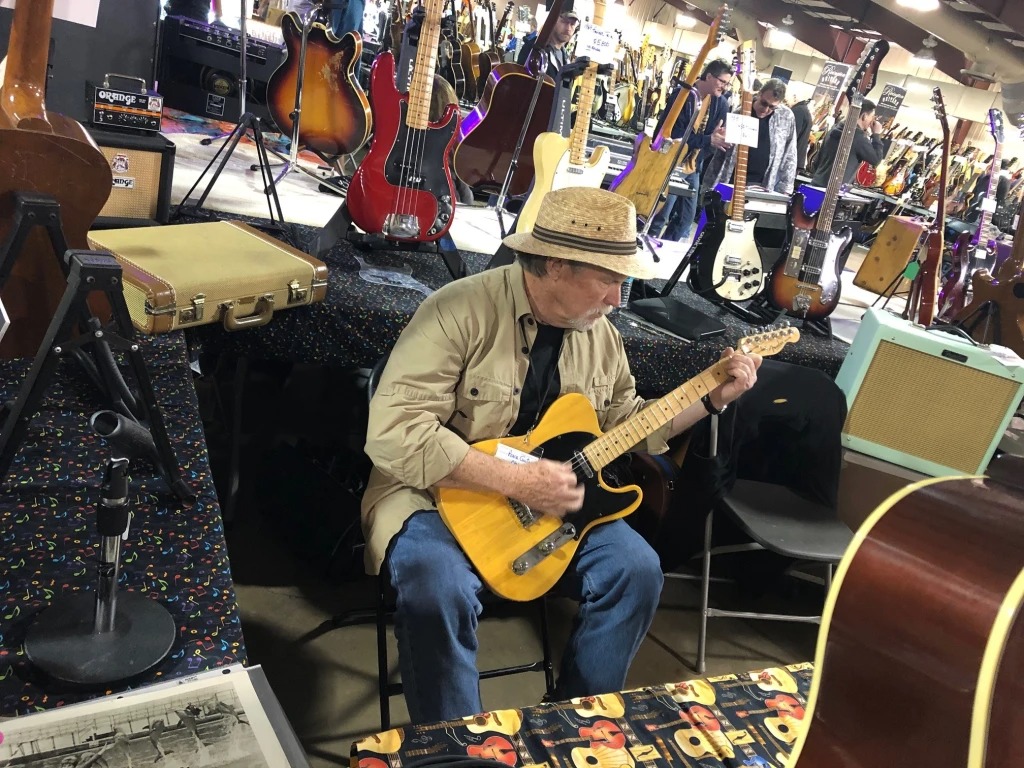
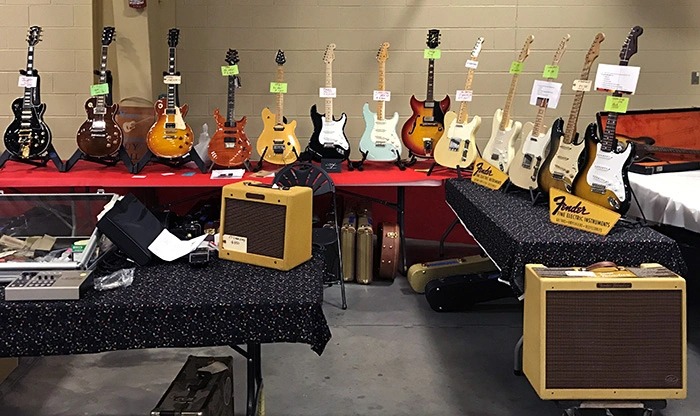
Rodney Hannah is the proud owner of a “massive” collection of sports memorabilia. This includes autographed baseballs, baseball cards, and autographed photos and jerseys. With sports being his only hobby, Rodney’s life consists of “family, work, and sports.”
“I started collecting baseball cards at age six,” he shares. “I can remember buying my first pack in 1973, and I just kind of got hooked.” A sports fanatic from his childhood, he collected cards until about 1989, and then he stopped for a while, mainly due the realization that everything was mass-produced. “Thankfully, I didn’t sell everything – I just put it away in boxes.” About ten years ago he caught the bug again, and now his collection has grown to include approximately 100,000 baseball cards, 400-450 baseballs, 30-40 jerseys, and around 50-100 signed photographs.
Rodney and his 13-year-old son love to attend NBA games and baseball games, where they get in-person autographs. Both father and son enjoy the hobby together. Rodney says that he knew from an early age that he loved collecting. “I never threw anything away – I saved ticket stubs to Cardinals games and any autographs I got.” His favorite item in his collection is a Mickey Mantle signed baseball, which he got autographed in person.
The most valuable piece is a poster autographed by Michael Jordan. This is a literacy poster that was posted in libraries in the late 1980s. “There are very few in existence,” says Rodney. “I’ve only seen 4 or 5 others that are signed and authenticated.” Other notable items in the collection include a jersey signed by Bill Russell of the Boston Celtics, a Larry Bird autographed jersey, a baseball signed by Ted Williams, and a collection of Hall-of-Famer signed baseballs.
About 90% of Rodney’s collection is displayed at his home in a special room. The remaining 10% is displayed in his office. The cards are organized by year, and the Hall-of-Famer baseballs are grouped together, but everything else is displayed in no particular order. For insurance purposes, he photographs every new purchase that he makes. In fact, he has an entire Facebook page dedicated to his cards and memorabilia so that he can keep a record of everything.
One of the unexpected side-effects of COVID-19? The number of online auctions has skyrocketed. In fact, eBay has reported that their first quarter active buyers reached 174 million, which reflects two percent growth over their prior year quarter. Auction houses are turning to the internet as a means of staying afloat. What’s more – many of these auctions are for a good cause.
While first-responders and essential workers have been doing their part to support relief efforts, collectors have had many opportunities to make a contribution. Collectible items are being auctioned off across the country to raise money for a variety of charities and organizations.
Take a look at the ways that athletes, brands, and other organizations have been helping to support these efforts.
Sports Memorabilia Being Sold to Benefit COVID-19 Efforts
Athletes and collectors have been donating items to be auctioned for the COVID-19 relief efforts. Notably, NASCAR team owner Richard Childress has been auctioning off his personal collection of memorabilia on eBay. This includes thousands of exclusive items from his long career.
Derek Jeter did his part to help with relief efforts when he participated in the All-In Challenge. The All-In Challenge is an online fundraising platform where athletes, actors, and musicians can donate items or experiences to raise money for various charities that provide food for those in need. Jeter donated his 2014-All-Star game Yankees jersey for auction, which sold for $55,000.
Also participating in the All-In Challenge was Tom Brady, who auctioned off a few collectible items, plus an experience. The highest bidder would attend his first game with the Tampa Bay Buccaneers with three friends. After the game, there was the choice between a private dinner or private workout with Tom himself. Finally, they would also take home his first game-worn Jersey and cleats. The bidding closed at a whopping $800,000.
Another incredible high-ticket collectible up for auction in this challenge is Robert Kraft’s Super Bowl LI Championship Ring, which has surpassed $1,000,000 and will be up for auction until May 21. Another star-studded auction that took place through May 3 was the COVID-19 Charity Auction hosted by CollectibleXchange. Famous athletes (and collectors) donated items to be auctioned off in support of the WHO COVID-19 Solidarity Response Fund. This auction included a variety of items, such as autographed basketballs, footballs, jerseys, and more. Some athletes even auctioned off a meet and greet.
The generosity during this time has extended beyond famous athletes – Boston Red Sox beat writer Chris Cotillo decided to use his newfound spare time to help out. He began auctioning off his baseball card collection on Twitter – where he has over 40,000 followers. Rather than accept money for himself, the purchase price for these items was a donation to charity. In the end, he sold over 350 items for a total of over $57,000 for charity.
Movies, TV, and Art Memorabilia Being Auctioned
Sports memorabilia isn’t the only thing being auctioned. A24 hosted several separate auctions, on April 22, April 27, May 4, and May 11, to benefit relief efforts. These auctions sold items from various movies and television shows, including Euphoria, Hereditary, Eighth Grade, Midsommar, Uncut Gems, and The Lighthouse.
Even the art world has gotten in on this trend! From May 3 until May 19, Venice Art Walk launched an online art auction that included works by artist Ed Ruscha, Incubus singer Brandon Boyd, and celebrity photographer Sid Avery. This auction benefitted the COVID-19 response of Venice Family Clinic, a community healthcare center in Los Angeles.
Mattel Creates Toys to Honor Frontline Workers
Recently launched by Mattel is collection of action figures and Little People Community Champions called #ThankYouHeroes. This set of 16 figurines includes doctors, nurses, EMTs, and delivery drivers of various genders and skin colors. Until May 31, these can be preordered for $20 apiece, with $15 from each purchase being donated in support of #FirstRespondersFirst, which provides essential items to frontline health care workers and their families. It’s great to see that the world of collectibles is supporting the response to COVID-19 in such a variety of ways.
Sources
https://techcrunch.com/2020/04/29/ebay-q1-reports-sales-of-2-374b-active-buyers-up-to-174m-in-wake-of-covid-19/
https://www.rcrracing.com/news-media/news/2020/04/23/richard-childress-launches-personal-memorabilia-auction-and-sale-to-assist-covid-19-relief-efforts/
https://www.cnn.com/2020/04/29/us/mattel-heroes-toys-trnd/index.html
https://www.sportscollectorsdaily.com/athletes-pitch-in-for-covid-19-solidarity-response-fund-auction/
https://www.rollingstone.com/movies/movie-news/a24-auction-midsommar-uncut-gems-euphoria-covid-19-relief-charity-988200/
https://argonautnews.com/art-for-a-critical-cause/
https://www.si.com/mlb/yankees/news/derek-jeter-all-in-challenge-yankees-memorabilia-coronavirus-pandemic
https://inews.co.uk/culture/all-in-challenge-what-coronavirus-auction-fundraising-friends-cast-reunion-explained-2546282
https://www.fanatics.com/new-england-patriots/robert-krafts-super-bowl-li-championship-ring/t-25931418+p-7076771551985+z-9-2080862138?_ref=p-SFLP:m-GRID:i-r0c1:po-1
https://www.fanatics.com/new-york-yankees/derek-jeters-farewell-season-game-worn-all-star-jersey/t-14443221+p-4709441530243+z-9-540966073?_ref=p-SRP:m-GRID:i-r0c0:po-0
https://www.cbssports.com/nfl/news/tom-bradys-all-in-challenge-auction-which-features-first-bucs-game-jersey-brings-in-highest-bid-at-800k/
https://abc7ny.com/boston-red-sox-baseball-chris-cotillo-charity/6176079/
The COVID-19 pandemic has kept most of us inside our houses, with very few places to go besides a necessary trip to the grocery store. For many people, this situation means that we have some extra time on our hands.
If you’re a collector who is currently at home, try investing this time into your collection! Here are our best tips for how you can make wise (and safe) moves to improve your collection from the comfort of your home.
Add to Your Collection
USPS released a statement that it is still safe to send items through the mail, as there is no evidence of the coronavirus being transmitted this way. There are also multiple sources sharing that shopping online during this time is okay. This means that you can continue to safely add to your collection online using sites like eBay. As an extra precaution, you could wipe down and sanitize items that you purchase.
Organize Your Collection
You could use this time to further organize your collection by type! You could also invest in some new display materials, such as bins, shelving units, stands, risers, glass cabinets, or storage albums for trading cards and coins. There are plenty of places to order these supplies online, such as Amazon.
Track Your Collection
Having an inventory of your collection is crucial – especially in the event that you have to make a claim. One easy way is to take photographs of each item or a video of your collection, making sure that you capture all markings that authenticate the items. Another way is to catalogue your collection! This could be as simple as creating a spreadsheet that lists each item and its respective value, or there are tools that can help you – especially if your collection is on the larger side. Collectify™ offers extensive cataloguing software and allows you to store receipts and warranties, track auction prices, and email reports. CaptureMyAssets™ offers a complete approach to documenting your collectibles, including an asset management system. And finally, Collector Systems is a cloud-based collectibles management system with unlimited storage.
Value Your Collection
The quickest and least expensive way to value an item in your collection? Check eBay and other auction sites to see what the item is currently selling for. Be sure to look at the completed auctions area, because many items aren’t bid on until the last few minutes of an auction.
You could also search for a collectors club or dealer! An online search will reveal whether there are any local clubs or dealers that specialize in your collectible. Members of clubs can be a great resource, and they may be willing to answer any of your questions for free.
If you can’t find the value of your collectible on eBay or through local clubs or dealers, you can have it appraised from the comfort of your home using an online appraisal company such as Value My Stuff™. This company has a team of experts who have worked for leading auction houses. After you upload photographs and details about your item, they will email you a PDF report and online certificate detailing the history and value of your item – all within 48 hours.
We hope that these tips help you stay safely occupied during this time! We wish you and your family good health, and we remain ready to assist you. Contact our collectibles insurance experts today with any questions!
Sources:
https://about.usps.com/newsroom/statements/usps-statement-on-coronavirus.htm
https://www.ezstorage.com/blog/six-tips-organizing-and-displaying-collections/
https://www.liveabout.com/how-to-find-the-value-of-an-item-780265
Baseball Card and Video Game Enthusiast Views Collecting as an Investment
Eric Naierman got his start collecting baseball cards in the early 90s. Like many collectors, he realized that the card companies were overproducing cards at the time, and this made most of the cards that he was collecting almost valueless. They still held a nostalgic value to him, but he stopped collecting after high school.
Around 2015, Eric opened his own dental practice and began making a living. It was around this time that he came across a CNN Money article about the 1986 Fleer Michael Jordan Rookie card. “It’s his famous rookie card with him jumping in the air, dunking,” says Eric. “It became an iconic card.”
The article was discussing how the value of that card throughout the years had outpaced so many other common investments. Eric had never considered cards as an investment before, and this idea intrigued him. Rather than invest in typical stocks and bonds, he could make an investment in something that actually piqued his interest – something he would actually want to own.
He created a budget for himself, went on eBay, and found cards whose value fell within his range of affordability. He realized that his new investment had lots of utility – it was something he was excited to own, but it could also later be sold or passed on to his kids.
His bug for collecting was reawakened, and he began making regular purchases on eBay of cards that he always wanted during his childhood, along with others that he felt would also be good investments. He spent a few years learning the market and how it fluctuated as well as studying the best time to buy and sell certain cards. He admits that he made many mistakes at the beginning, and he has since learned from these mistakes and honed his skills as a collector. After getting a few years of collecting experience under his belt, it wasn’t long before he became interested in something new.
While making a purchase from Heritage Auctions, Eric was looking at the website and stumbled upon a picture of an unopened Super Mario 3 video game in its original factory seal. He was surprised and intrigued to find something he had loved so much as a kid being auctioned on this site. Now he had set his sights on a new collectible: factory-sealed video games.
The knowledge he had picked up from card collecting served him well in this new arena. The video games brought him even more nostalgia than the baseball cards, mainly because they were games he had grown up playing. He was especially intrigued by the fact that video games came with an original seal, indicating that the game is still in its original condition. This adds a level of intrigue not found with other collectibles such as cards, comics, and coins, which were never individually sealed. He realized that he got particular enjoyment as a collector from owning collectibles that had a huge impact in world and cultural history, still preserved in their original state.
The challenge? Sealed video games were quickly becoming a bigger investment than baseball cards. In fact, some of the games were selling for five figures or higher! His brother-in-law made a recommendation: why don’t you find others who are interested in joining you and purchase the video games together?
Eric took this advice and started asking around. He was taken aback by how many people were interested in getting involved. He put together a partnership and the group began purchasing the games together. Eric was able to gather over $1 million in capital to make these purchases, which was so notable that the New York Times mentioned him in their story about video game collectors. He named his partnership the Vintage Video Game Club.
Eric estimates that there are about 250 games in his collection at this point, with his most valuable games being a sticker-sealed Mario Arcade, followed by a factory-sealed Castlevania in its first print “hang tab” box. He has taken a particular interest in the very earliest prints of these games with their original factory seal still intact. Eric says, “When I realized the cultural significance of these original Nintendo games and their impact on the future of e-sports and gaming, as well as their remarkable rarity, I knew these were the games I wanted to have.”
You can follow Eric’s collecting journey and featured games from his collection on Instagram @vvgclub.
Every little girl has had the phase – the one where she loves horses and has her very own model horse collection. For some people, this is more than a phase – it’s a lifelong passion. Just ask Corina Roberts, who was surprised to discover that the majority of her fellow model horse collectors are over the age of 50.
“I have my older sister’s horses,” shares Corina, “I was pretty much a from-birth collector.” When she turned 18, she figured that she was now an adult who shouldn’t play with horses, so she put them away for a few years. She later realized that that, “Adults just play with more expensive toys,” and she was happy to start collecting again under the influence of her motorcycle-enthusiast husband.
Corina recalls that there was a specific moment when she realized that she was a collector. “I was standing in a feed store looking at some Breyer horses, and I was finally looking to see how well they were painted, how nice the markings were, how good the shading was – the things you look for when you’re showing a horse. And that was my ‘aha’ moment. I realized that I had a collector’s mindset.”
The first horse that Corina spent a significant amount of money on was a limited edition horse for $150. This horse is probably worth $700 or $800 now. Today, Corina will spend in the neighborhood of $200 on an unpainted resin horse that was cast by the artist. She then enjoys customizing the horse by painting it. Some of the most impressive horses in her collection are those made of artist resin – particularly those by artists Sue Sifton, Kitty Cantrell, and Maggy Jenner Bennett.
All of her horses are displayed on shelfs in a 10’ x 10’ bedroom. She tries to avoid storing anything in boxes, believing that if you have to store your collection in boxes, you have too many items! Her collection has an estimated 700 pieces in it – this includes an entire collection that was recently gifted to her by a friend. One of the most interesting aspects of collecting model horses is the social factor. Corina, along with other collectors, enjoys participating in live model horse shows. Somewhere around 1970, people started photographing their model horses and a thing called “model horse photo showing” emerged. This evolved into the live shows that exist today.
“Models in the Mountains is the show we host here [in California],” says Corina. “We are in the heart of the Angeles National Forest.” This show starts on a Friday with an art day and a model horse retreat so that people can relax, socialize, eat food, do artwork, hike, and have a pleasant day. On Saturday, the day of the show, there are up to 19 showers who may bring several hundred horses with them. The day is non-stop! “We are trying to promote the shows and build a sense of community,” says Corina. They also promote art, because, “There are talented equine artists [out there], and with the birth of the internet we’ve been able to connect across the world.”

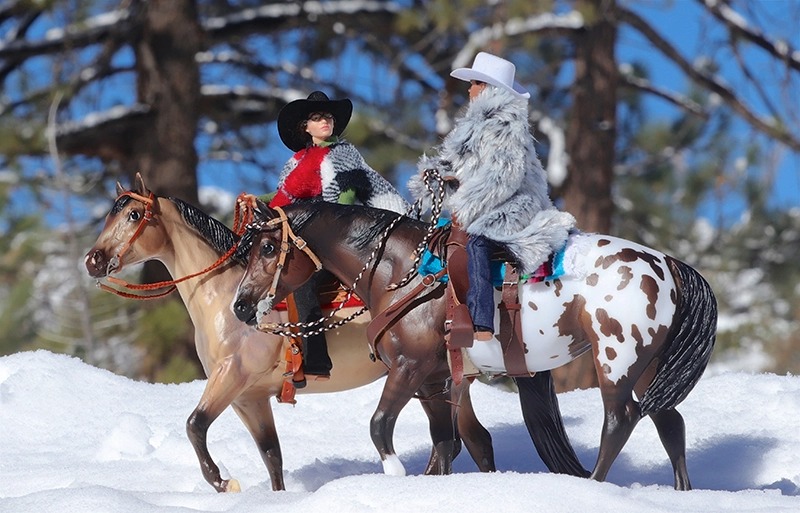
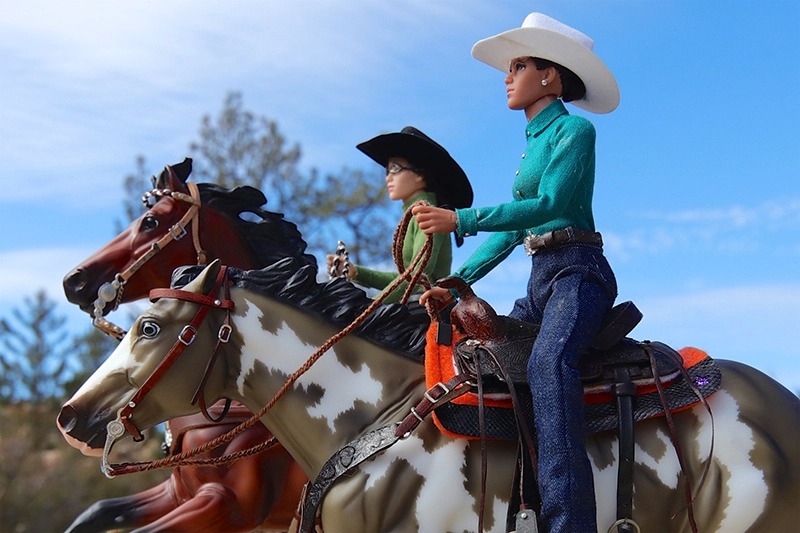
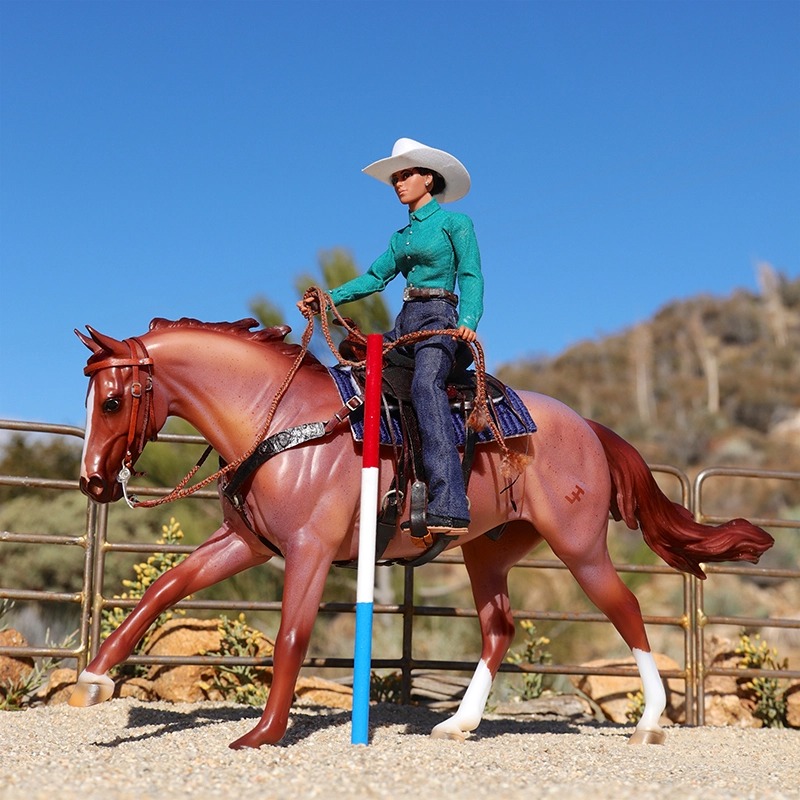

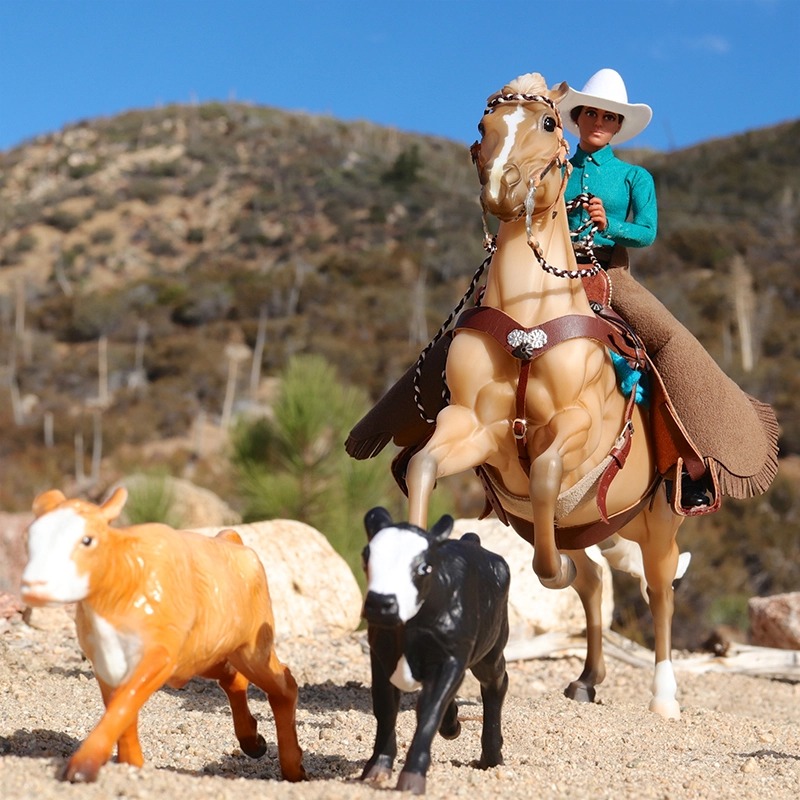
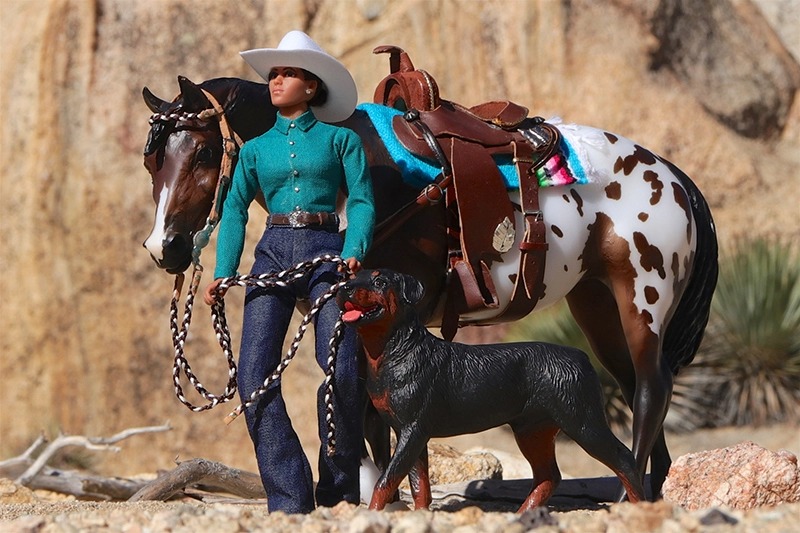
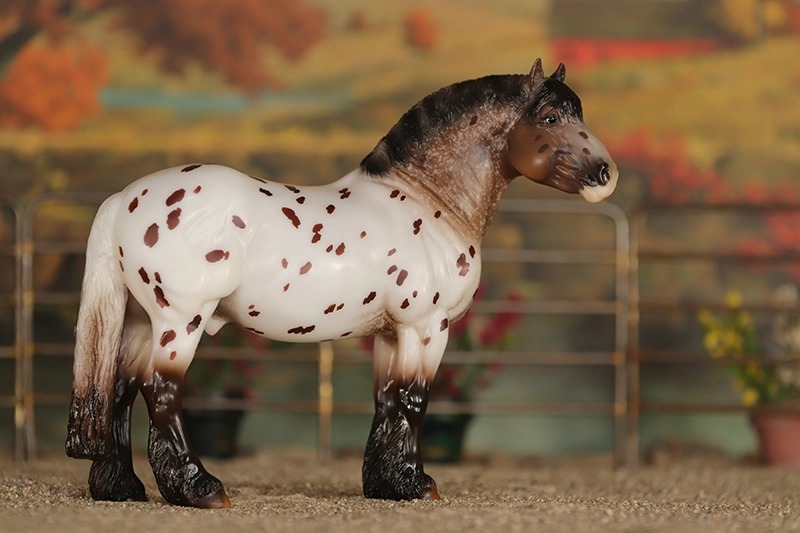
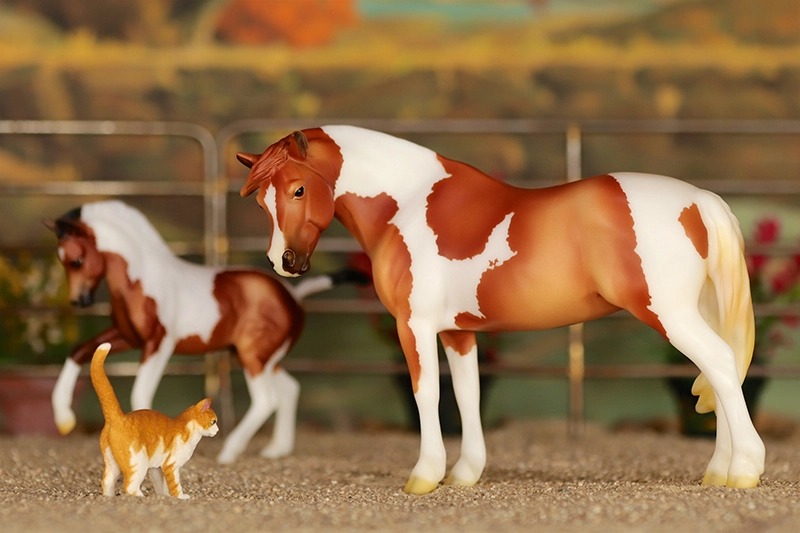
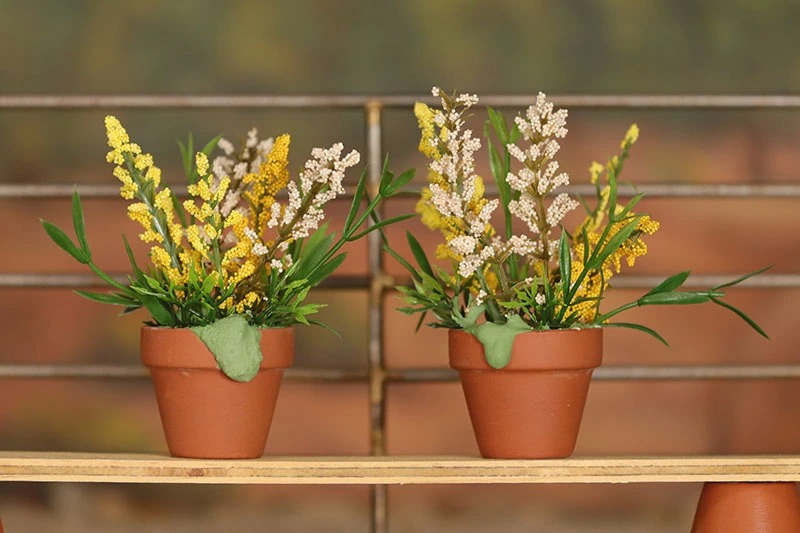
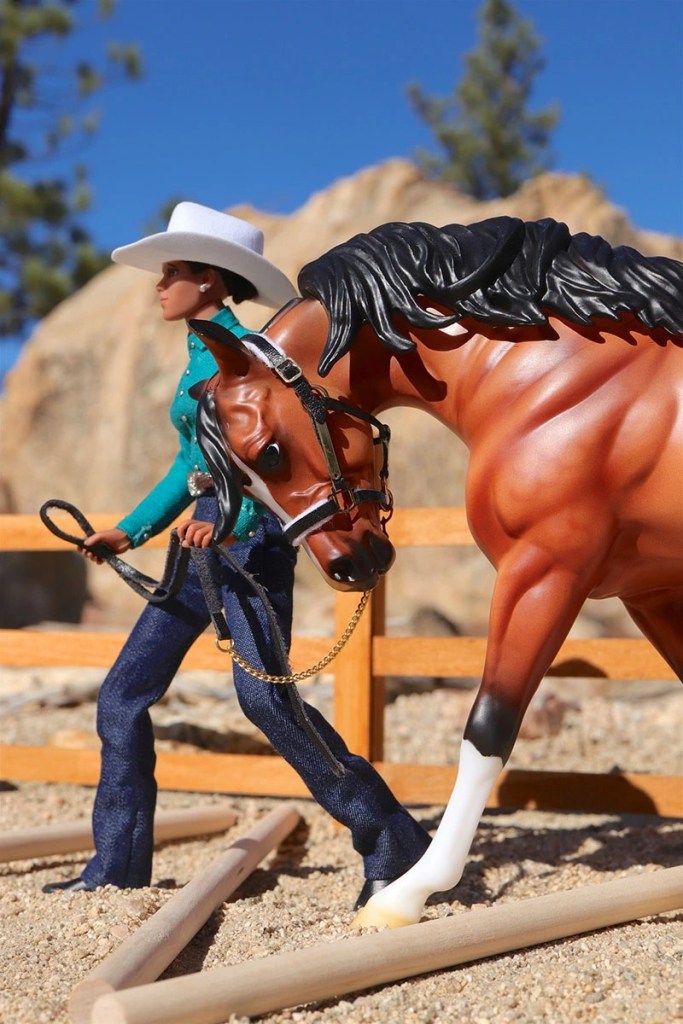
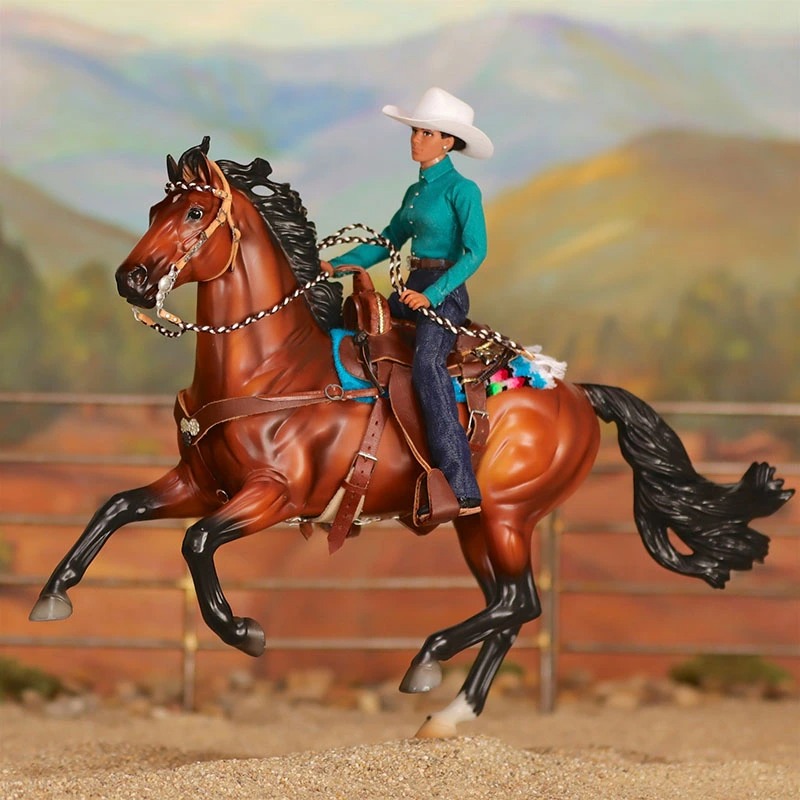
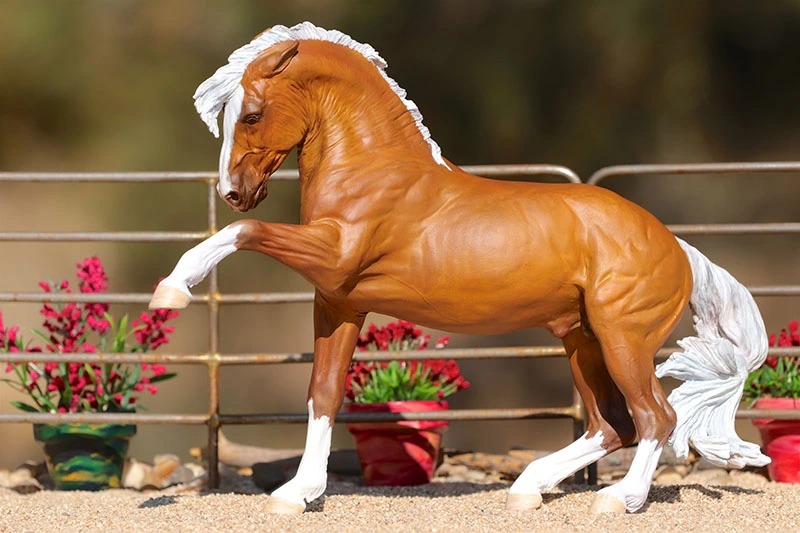
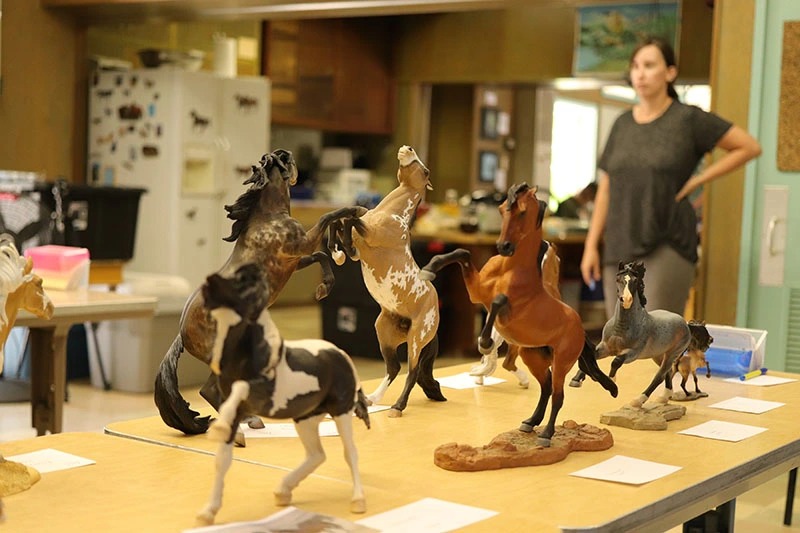
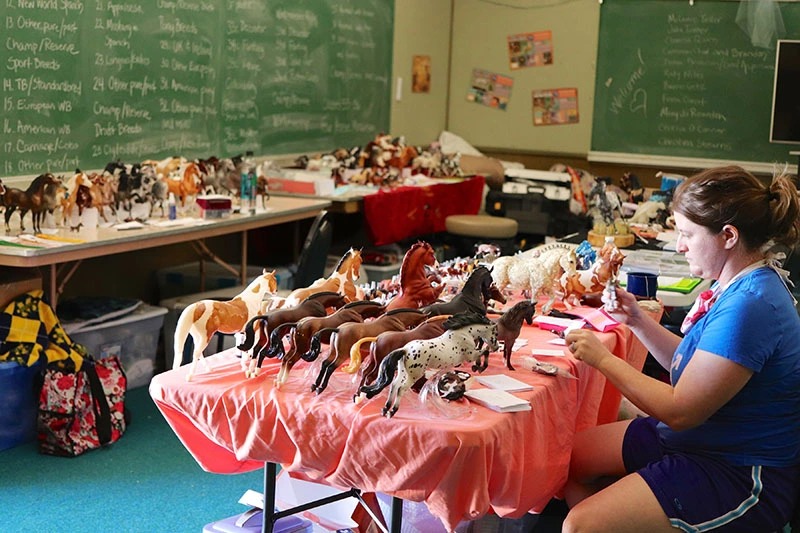
Andy Denes is a collector of a unique item called the matchbook holder. The matchbook holder is a 20th century version of a match safe (a small, portable box that holds loose stick matches). Rather than containing the loose matches in a box, a matchbook holder wraps around a familiar folding cardboard matchbook.
Andy discovered matchbook holders as a collateral collectible for a matchbook collection. An obscure but inexpensive item, Andy says they are, “Small enough so that I could assemble a large collection in a small space.”
The paper matchbook was invented in the 1890s, and in 1904, the matchbook holder was first patented as a container into which a matchbook could be inserted. After the 20 matches from the paper book were spent, you would toss the empty match cover away, but the holder would remain in your pocket, ready to cover up the ad on the next matchbook.
Matchbook holders became a sideline product for many companies that were manufacturing base metal, leather, and plastic advertising novelties. Silver, gold, and even platinum matchbook holders would be marketed by the likes of Tiffany, Gorham, and Cartier, often with matching cigarette cases. Reaching a high point between the world wars, matchbook holders continued to be manufactured in the 1950s, but their production has since decreased.
The U. S. produced the most matchbook holders, but there were thousands, from base metal to gold, made in England. Besides the United States and England, Andy’s collection also includes examples from Canada, Mexico, Peru, Guatemala, South Africa, Germany, France, and Japan.
These matchbook holders are often tapered like a matchbook itself, but a different style of flat matchbook with balsa wood matchsticks was popular in Central Europe. Andy doesn’t collect matchbook holders for this style, but they exist, and they include styles made by Fabergé and other famous European craftsmen.
The collection has grown to over 3,000 matchbook holders, and Andy has had to restrict his acquisitions to only those produced in the United States. Says Andy, “I’ve accumulated quite a lot of information on the history of these obscure collectibles, and I keep telling myself that I will someday write a book. We’ll see.”
Named in honor of the martyred 3rd-century Roman priest and physician Valentinus, Valentine’s Day means sending and receiving Valentine’s Day cards. Legend has it that Valentinus was beheaded for helping Christian couples marry, and that he penned the world’s first Valentine’s card to his jailer’s daughter on the eve of his execution.
Around 500 A.D., Pope Gelasius canonized Valentinus and declared February 14 as St. Valentine’s Day to honor the martyr. Since that fateful time, Valentine’s Day has evolved into a holiday that celebrates love, romance, and friendship.
When Was the First Valentine’s Day Card Made?
While the origins of Valentine’s Day cards are unclear, historians generally credit Esther Howland of Worcester, Massachusetts with publishing the very first American Valentine’s Day card in 1849. She is thought to have launched a homemade card business from her home, growing her Howland’s New England Valentine Co. into a thriving company that’s reported to have generated as much as $100,000 in annual revenue.
Howland’s venture was preceded by John Fairburn of London, England, who is said to have published the world’s first printed Valentine’s Day card on January 12, 1797. The card contained a printed verse complete with hand-colored cupids, doves, and flowers, and Fairburn posted the card to Catherine Mossday, along with a handwritten note asking for a date.
Pre-dating printed Valentine’s Day cards are hand-crafted love notes, including what’s believed to be the oldest surviving Valentine’s greeting on paper. Crafted by the Duke of Orleans, a Frenchman imprisoned in the Tower of London in 1415, the note to his wife reads, “I am already sick of love, my very gentle Valentine.” It remains carefully preserved in the British Library, which also holds a 1477 Valentine’s Day letter that is thought to be the first-ever English-language Valentine.
When Did Hallmark Start Printing Valentine’s Day Cards?
Although modern Valentine’s Day cards pre-date the founding of the iconic greeting card company Hallmark, the tradition of exchanging romantic notes on February 14 in the U.S. really took off with the launch of Hallmark’s first Valentine’s Day cards in 1913.
In fact, a 1915 fire completely wiped out the company’s inventory of Valentine’s Day cards, which led to the purchase of the very printing presses which helped transform Hall Bros. into the Hallmark company. As of 1916, commercial production of Valentine’s postcards and cards was thriving, and Valentine’s Day cards quickly became an annual tradition throughout the United States, Canada, Mexico, United Kingdom, Australia, France and Italy.
How Much Could Your Collectible Valentine’s Day Cards Be Worth?
While Valentine’s Day cards rarely retail for more than a few dollars, savvy collectors can transform a box filled with vintage cards into some cold hard cash.
The actual value of a vintage Valentine’s Day card depends on multiple factors such as the condition of the card, its age, and most importantly, if it’s a sought-after item. Handcrafted cards made with lace, ribbons, and parchment always create a buzz, as do Victorian-style three-dimensional cards made with die-cut images. Some Valentine’s Day card collectors focus on postcard Valentines, which were common between the 1920s and 1940s.
Asking prices for collectible Valentine’s Day cards go as high as $1,800 USD for a postcard from 1853, and there are multiple listings of vintage cards from the last century that are in the $200 range. Because there is such a wide range of prices for collectible Valentine’s Day cards, serious collectors should have their cards appraised by a credible auction house or certified appraiser.
Protecting Your Collection
If you’re a Valentine’s Day card collector, or any collector, you already know the importance of protecting your collectibles against damage from moisture, fire, insects, and UV rays.
While due diligence can go a long way towards preserving the value of your collection, the right collectibles insurance policy ensures that your investment won’t be wiped out if disaster strikes. Collectibles Insurance Services specializes in providing protection for all types of collectibles. For more information, contact our collectibles insurance experts today.
Sources:
https://www.history.com/news/6-surprising-facts-about-st-valentine
https://ideas.hallmark.com/articles/valentines-day-ideas/history-of-valentines-day/
https://www.collectorsweekly.com/cards/valentines
https://www.businessnewsdaily.com/3951-first-valentine-cards.html
http://www.bbc.co.uk/ahistoryoftheworld/objects/L1NM_6mWRymAMKXcRDlXJA
https://www.pbs.org/newshour/arts/love-fleeting-vintage-valentines-worth-keeping
It was a Lionel train set around his parents’ Christmas tree that sparked Bob Pettitt’s passion for trains at the young age of six or seven years old. Years later, Bob is a collector with a vast model train collection comprised of over 9,000 items and accessories – a collection worth somewhere in the neighborhood of $90,000.
The trains and accessories are displayed on three different train layouts. Bob’s 750-square foot, two-car garage is home to the first one. After running out of room in that first space, he expanded to include two more layouts in two separate buildings. The remainder of the collection is displayed on shelves that circle the perimeter of the rooms. These train layouts include a number of complete passenger train models, such as the City of Los Angeles, the City of San Francisco, the Southern Pacific Daylight, and the Santa Fe El Capitan.
“The whole collection is special to me because it represents my childhood and my memories.” This unique collection is full of accessories that hold a special nostalgia for Bob. His favorite piece is a scratch-built model of the Pomona, CA home where he grew up. He lived in that house from the age of four until age seventeen, and his father scratch-built this model many years ago.
Another piece that holds a special memory is a model of a Greyhound bus. This reminds Bob of a time in 1954, when at the age of seven he attended the Los Angeles County Fair in Pomona. Greyhound Bus Lines had just introduced a new bus called the Super Scenicruiser, a double decker bus made by General Motors Corp. They would take one of the cruisers out of regular service, bring it to the fair, and a marketing manager would sit in the front seat and tell people about the bus over the PA system.
Fascinated by the bus, Bob sat inside of it and eventually memorized the marketing director’s spiel. Before long, he asked the marketing director if he could be allowed to deliver the speech over the PA system just one time. “I must’ve done a half way decent job,” says Bob, because the marketing manager asked him to deliver the speech at the fair every day, all day long, for the remainder of its run. With his parents’ permission, Bob accepted the offer and received free tickets to the fair in exchange for his work.
Besides buses and buildings, Bob’s accessories also include airplanes – another vehicle that holds a fascination for him. Bob recalls the unique opportunity he was given to fly in the cockpit of a Lockhead L 1011 on a flight from Portland to Mississippi. “That was one of the thrills of my life,” says Bob, “so I have a model of that plane flying over the layout.”
He also has a model of a United Airlines jet – commemorating a real-life crash in Portland where a plane unfortunately ran out of fuel and crashed just before arriving at the airport. His personal connection to this incident was that the City Manager of United Airlines came to a class he was teaching (as a professor and Business Division Chair at what is now Concordia University) and spoke about the crash.
Because all of the pieces are so closely connected to Bob’s own memories, his layouts and models are unique. He’s proud of the one-of-a-kind pieces that he owns. Just one more example of this? Besides collecting model trains, Bob is also part of running a small TV station, KRHP Channel 14. He is currently working on a model of the station. “I finally found something that I could use for the satellite dishes,” says Bob. “I don’t imagine there’s another person in the country with a model of those studios.”
